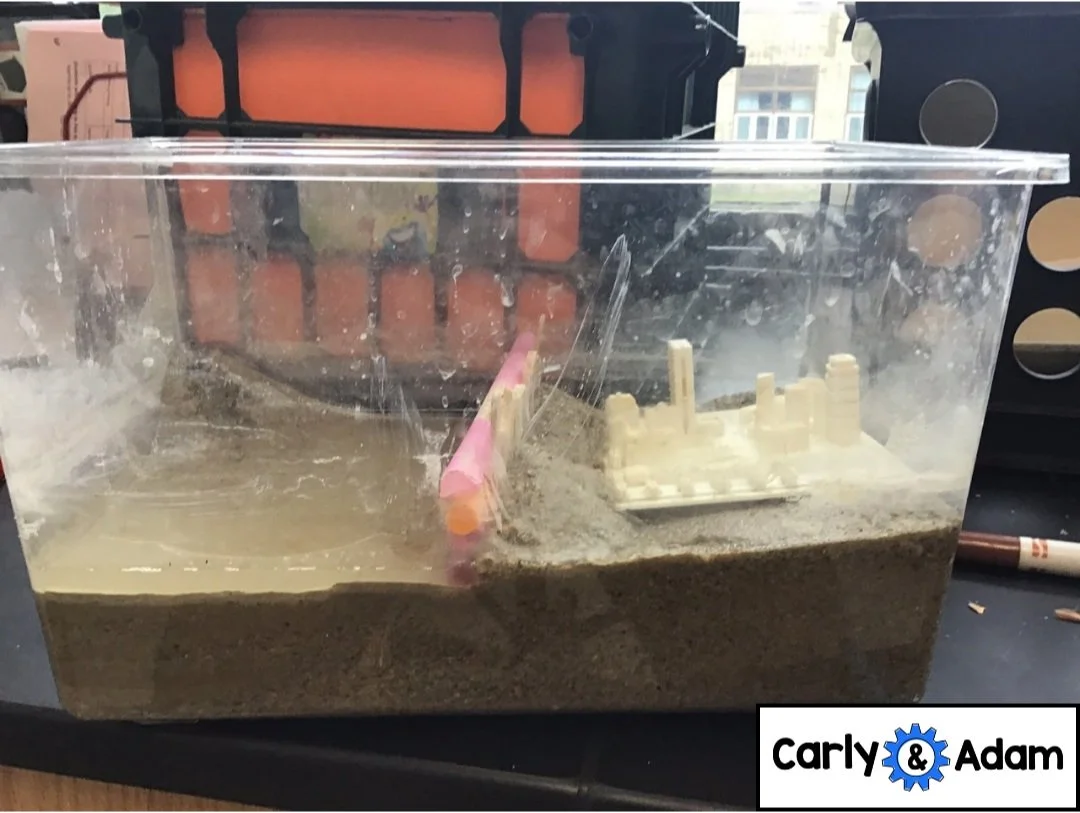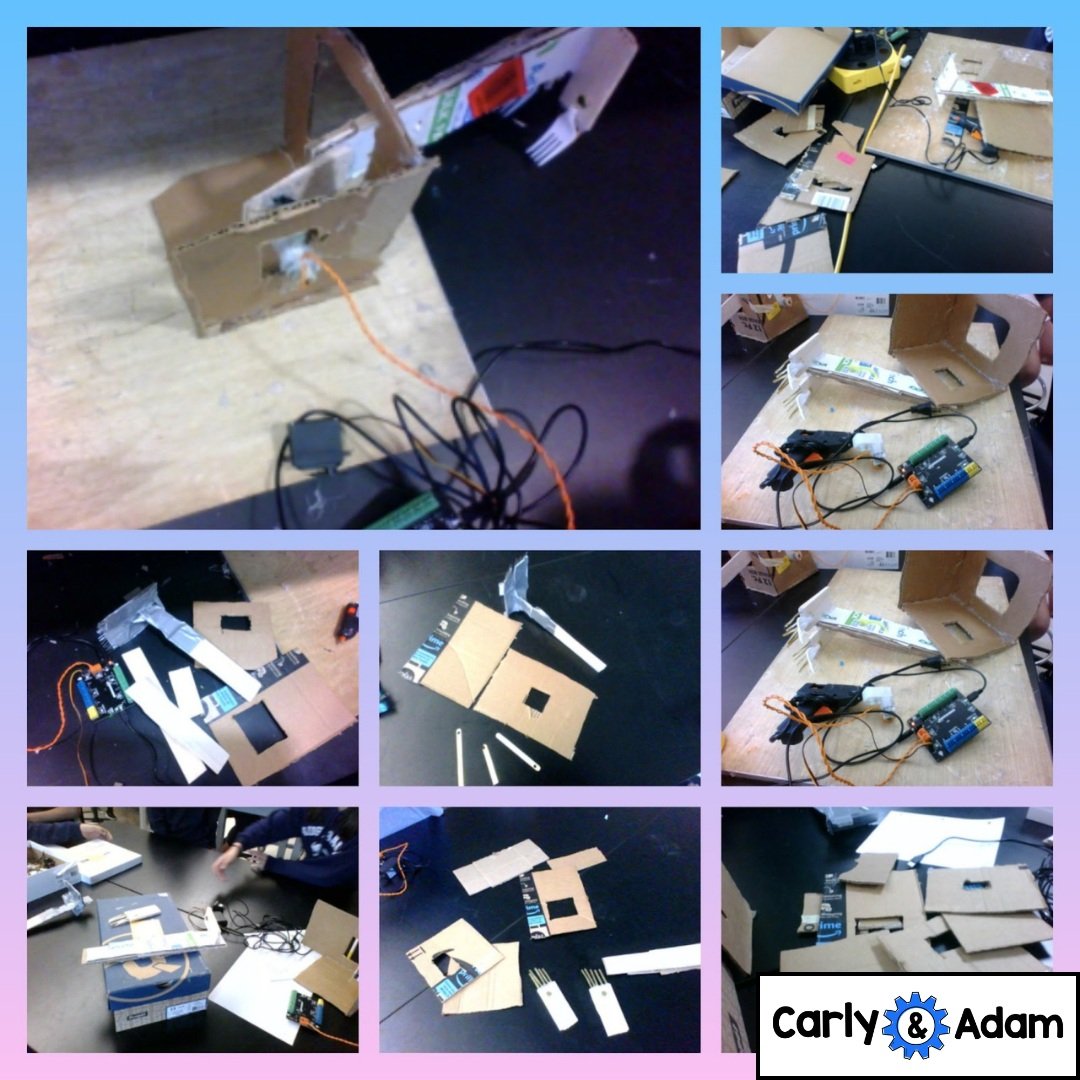How to Teach a STEM Activity
The following is a guest post from Erik Murray.
Nuclear power and kids have a lot in common. They can be a force for good, or they can be a force of pure unbridled destruction.
The difference being control. The force for chaos and destruction can rear its ugly head in many places. The biggest being the group project.
For every successful project I’ve run, there’s been 2-3 catastrophic failures. How do we keep group projects from blowing up in our face?
Here’s some tips and tricks on how to clean, efficient projects and not unmitigated disasters.
Set Up for Success
Projects should always serve a purpose. They should help enhance learning. Even if you have the coolest thing you want to do for a project, it will be “doing things just to do them” and the kids will know. Whatever problem you’re having the students investigate it must be engaging to them. Some sort of hook to give them the buy-in to want to do it.
One way that I like to create buy-in for a new project is to have it linked to something that was going on in their world. For example, When we were talking about Climate Change a few years ago. We were researching ways the world around us was being affected.
Living in the Boston suburbs and experiencing a wild winter. There was a nor'easter almost every week. The effects caused some areas of Boston to flood.
A student was talking about how it took them more than two hours to get home because their subway stop flooded. We researched that in the near future Boston flooding would continue to be a problem, which led us into our project on how to protect the city from threats of flooding.
Connecting learning to something that is happening in their immediate world; is the best way to foster authentic learning.
Saving Boston one messy experiment at a time
Don’t Pretend to be a 3rd Base Coach
Grouping, the biggest issue when it comes to projects. If done poorly can be a total disaster. The second students find out they’re doing a group project. They want to know who they’re working with.
If I say they’re picking their own groups, students will start to do what I call 3rd base coaching. Where they motion to their friends on who they want to work with, making all sorts of hand gestures. Much like how a 3rd base coach motions to players.
How do we solve grouping problems?
What I like to do is give the instructions to the students first. Usually one sheet printing out with the problem. What they’re going to be doing and the expectations for the project. Students then read the instructions silently. As they're reading they are making notes of things that they have questions about.
Then, I have them discuss the project to see if they can answer each other's questions, as well as have a general understanding of what they’re doing. Then we have a class conversation on what we're doing to hammer out understanding. At this point, I will show students an example of what they’re doing.
No matter what, always have an example to show students.
It’s the fastest way to clear up any misunderstandings. If you have time, try doing the project yourself following the instructions. You can find most of the pitfalls students will fall into this way. If something was hard for you to do. You can guarantee students will fall into the same trap.
If this is a project I’ve done before this is when I will also share advice with students who have done it before. Part of the assessment for my projects is to have students write advice for future students. It's helpful because who better to give advice than other students? Students listen to their peers more than they listen to me. So, advice tends to resonate with them.
Now that they understand what they are doing, and what the expectations are. I will let them make their own groups and start working. The caveat being I have the option to veto any groups. I also tend to switch between letting them pick their own vs. assigning them each project.
Keep a Journal
The biggest thing I’ve done in the last couple years that I’ve adopted; is to have students keep a project journal throughout working. The journal consists of...
Summary of what they’re doing and any resources
Place for students to include their plan/who is going to do what
Building days, place for students to write their daily goals and take pictures
Parking lot for any questions that come up while building
Having students keep a journal is an easy way for them to be accountable. If it’s written down then it’s easier to see what's going on. At the start of every class that we’re working on, I have students set a goal for what they wanted to get accomplished that day. I also have students take a picture of what they’re working on.
With pictures, students can see their growth each day and it helps keep students on task knowing their work is checked.
It’s fun to watch a project come together.
At the end of class, I have students complete a simple google form that asks if they get their goal completed.
If not, what did they get accomplished? It also asks, how well they worked together, and if they had any questions or problems that came up. Doing the google form at the end of class is the best way to catch any hiccups that happened along the way.
So many times I assumed by walking around the room I think groups are working well. Then I check the forms, and apparently, a group had a huge meltdown. Doing the form individually students tend to be more honest and it helps fix problems before they become parent emails.
Wrapping it up
Having students do projects is the best way to have an authentic learning moment. I hope these tips help you get off and running.
I can’t wait to see what your students create!
Have more questions or need additional resources?
Download our Free STEM challenges from our Free STEM Resource Library.
Join our Free Facebook Group.
For more STEM ideas, inspiration, and collaboration with other STEM teachers be sure to join our FREE Facebook group Elementary STEM Teachers with Carly and Adam!
We hope you have found this blog post helpful. To stay connected with Carly and Adam's teaching tips and classroom freebies be sure to follow us on Facebook, Pinterest, Teachers Pay Teachers, and subscribe to our blog!
Erik Murray is a 6th grade STEM Teacher in Massachusetts. Follow Erik on Twitter @MrSTEmurray.




